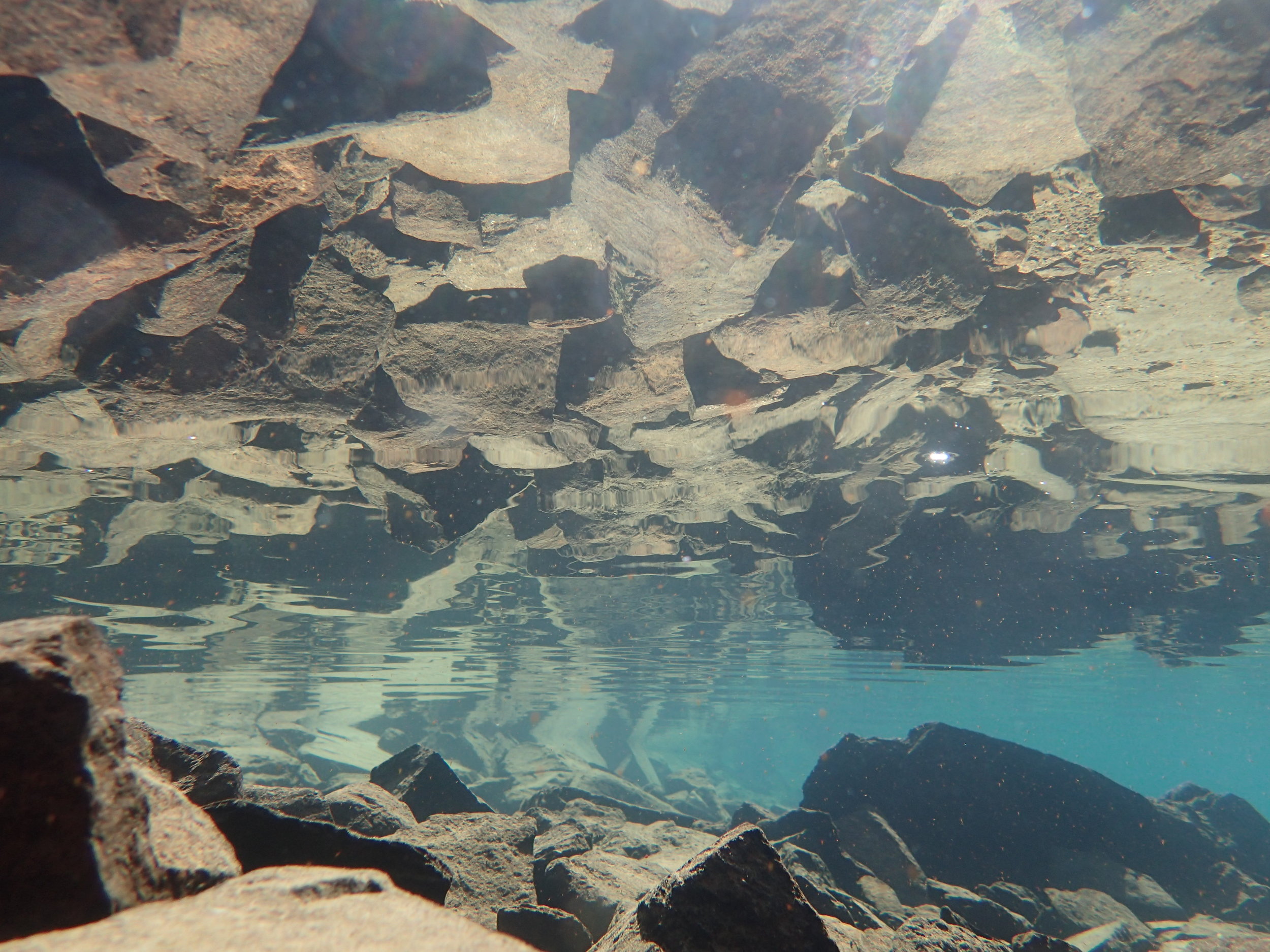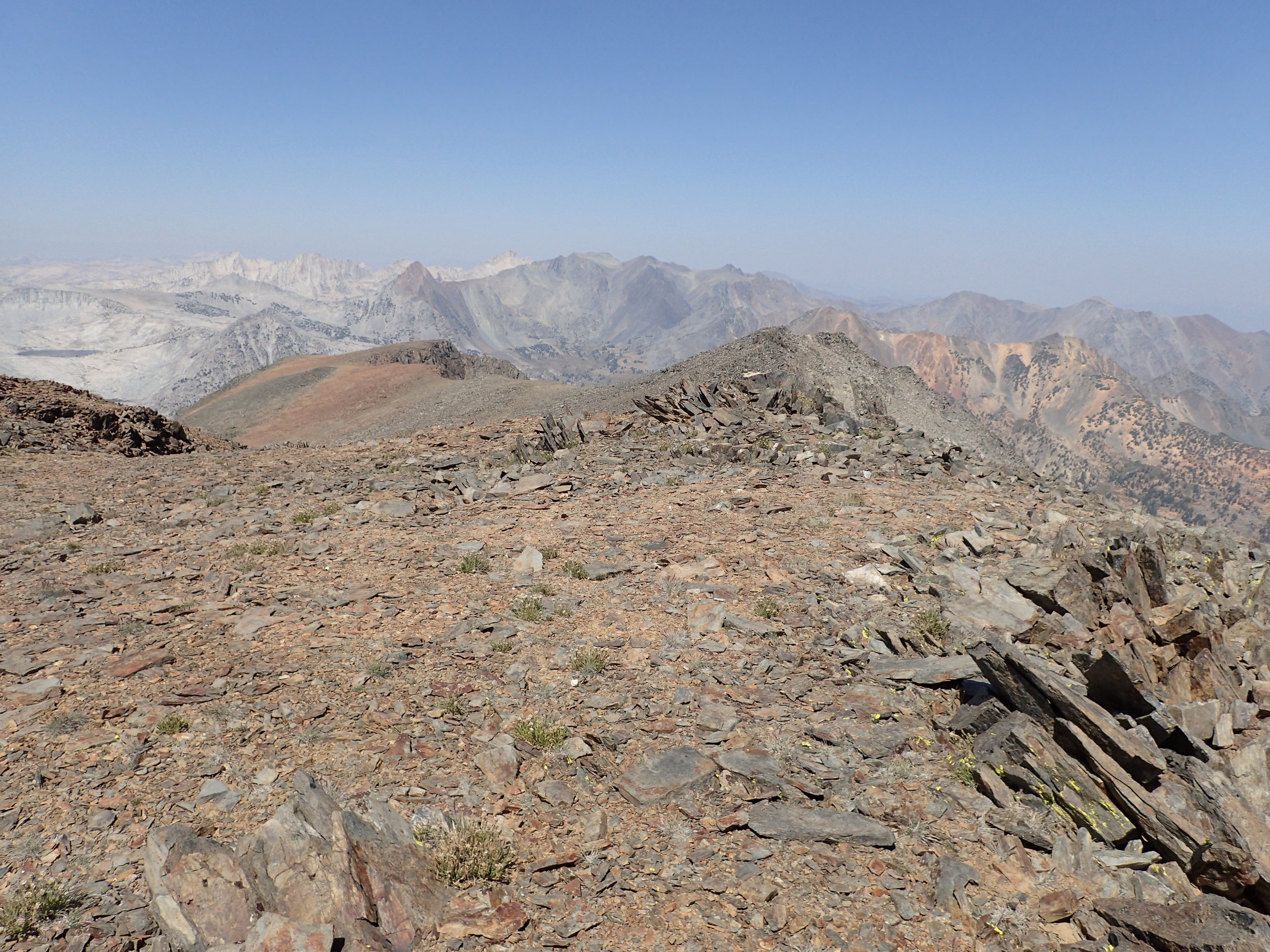TRIPLE DIVIDE
News from the Sierras research for Confluence: streamwater, handwriting and urban curbs
September 2016
I'm back in Berkeley now, but the last days of my August field work deserve sharing. I was at the SNARL field station talking with frog biologist Thomas C. Smith about Confluence and we were wondering if the watershed that supplies Los Angeles (in which we were, toward the top of the Owens Valley) has a place where it meets the north-east drainages going through Reno or into Walker Lake and the Nevada desert AND the western drainage running into the Central Valley and to San Francisco Bay. It would be the middle of my project, water-wise, where a few inches difference would mean that rainfall would end up in LA, Reno, or San Francisco Bay. I went looking for that spot.
Early morning at my camp above Virginia Lake.
Every crevice is a watershed, these beauties cracked and polished clean by glacier ice 10,000 years back. But the ones I'm after have been shaped by bigger, hotter forces of magma and time: the Sierras and the Great Basin.
Two ponds, at about 11,000 feet elevation, marooned and shrinking in a now snowless saddle, the nearby ice fields melted down to their ancient bottoms. A peek into the turquois water showed up a sprinkling of tiny orange copepods. A good place to have a short life span!
Here it is, where I'm standing. Not especially pointy, but easy enough to feel and see: left foot in the Central Valley, right foot in the Nevada deserts, back to Los Angeles by three hundred fifty miles of aqueduct. The granite of Yosemite is the white in the left-hand distance, the massive fractured volcanic skirts of that granite along to the east.
Oh, water! I just had to perch it there, on the Triple Divide, like Wallace Stevens' Anecdote of the Jar. But this came down again with me.





